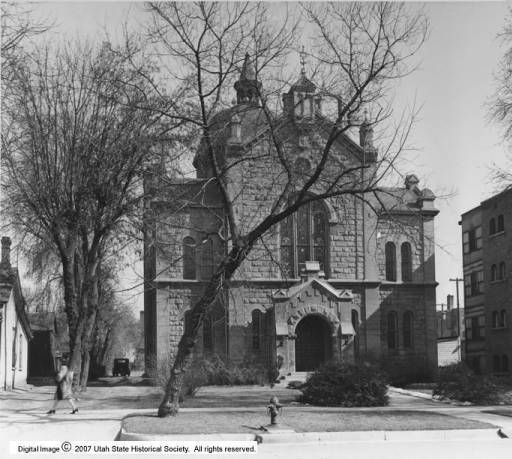Dublin Core
Title
Description
Utah’s first Jewish congregation, B’nai Israel, remains a symbol of the state’s first Jewish pioneers.
When the first permanent Jewish settlers in Utah celebrated the high holy day of Yom Kippur a little less than 150 years ago, they did so in a private home. The territory’s Jewish community was still in its infancy, and grew slowly as westward-bound Jews made their way to the Great Basin. Most of the Jewish migrants to Utah were merchants, intent on taking advantage of new opportunities in the American West.
By 1881, Jewish pioneers had established Congregation B’nai Israel and had bought a plot of land for a synagogue and school at the intersection of Third South and First West in Salt Lake. Two years later the school and temple were finished, though the congregation soon moved to a new synagogue built on Fourth South. The new building was conceived by Philip Meyer, the nephew of Frederick Auerbach, one of Salt Lake’s leading Jewish businessmen. Meyer, who lived and studied in Germany, came to Utah at his uncle’s expense hoping to build a structure that would please Utah’s Jewish community. What he designed was a scaled-down version of the Great Synagogue in Berlin. (The Great Synagogue, incidentally, was eventually destroyed by Allied bombers in World War II.)
After the synagogue was built, Meyer returned to Germany (where he died in the Holocaust), and Congregation B’nai Israel struggled on. The rise of a new congregation, this one made up of mostly Eastern European Jews, eventually challenged the dominance of the original group of worshippers, causing the Jewish community to split into factions. Through all of this the B’nai Israel temple remained as a symbol of Utah’s first Jewish first pioneers.
Creator
Source
Image: The B'Nai Israel Jewish Temple was built in 1891 by architect Philip Meyer. It was built in Byzantine style to replicate famous synagogues in Berlin. 1945, Utah State Historical Society.
_______________
See Eileen Hallet Stone. A Homeland in the West: Utah Jews Remember (Salt Lake City: University of Utah Press, 2001), 1-20; Jack Goodman, “Jews in Zion,” in The Peoples of Utah, ed. Helen Z, Papanikolas (Salt Lake City: Utah State Historical Society, 1981), 187-220; and Ralph M. Tannenbaum’s entry on the Jewish Community in the online Utah History Encyclopedia.

